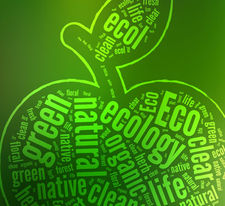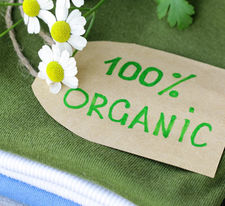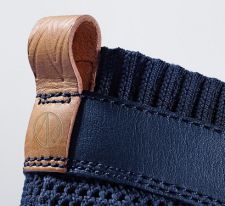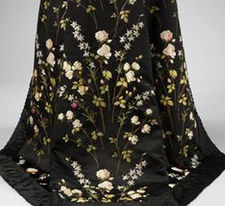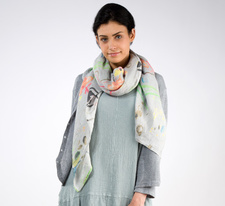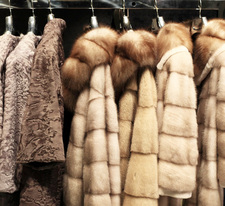In harmony with nature
part 1 part 2 part 3
Issues of environmental conservation concern the whole world. We realized that changes are necessary, but we do not always attach importance to the price of the goods that we buy and use daily. It is still difficult for us to assess the environmental friendliness of our lifestyle, as well as the world of brands and their products.
In the fashion and beauty industry, the environmental friendliness of products is associated with the safety of technologies for the environment and people, the purity of raw materials, the ethics of production processes and marketing, and ease of disposal. Not only the future of humanity, but also the health of each of us depends on how these issues are resolved.

In modern society, products made of natural raw materials, which are considered to be of the highest quality and safe, are becoming increasingly popular. Indeed, the purity and origin of the raw materials and substances are of paramount importance when creating fashion collections and cosmetics.
In 2018, according to the forecasts of WGSN, consumer requirements for the environmental friendliness of goods, as well as transparency, honesty and ethics of brands will increase significantly.
FIBERS AND MATERIALS OF NATURAL ORIGIN
Eco-friendly fibers and materials are considered to be made from natural raw materials of plant or animal origin, among which cotton and flax, as well as wool, occupy the first place. However, a number of conditions are important - refusal to use pesticides and chemical fertilizers, correct treatment of animals and the environment. For example, when growing cotton, chemicals are often abused, while it should be noted that the process requires a huge amount of water. The danger is fraught with the substitution of a traditional plant with a genetically modified one. In sheep breeding, there is another problem - degradation and desertification of pastures with prolonged use or too large a herd.
The most important advantage of natural fibers and materials is biodegradability, which prevents pollution of our planet. On the other hand, when using living beings, ethical problems arise related to cruelty, deprivation of liberty and life. From this point of view, even the traditional process of producing silk threads is not correct due to the destruction of the silkworm pupa.

The problem of ethics to a lesser extent affects the ancient types of animal husbandry associated with the production of wool, sheep breeding, goat breeding, llama breeding. The greatest number of protests among conservationists is caused by the use of natural materials such as leather and fur. In this case, in addition to cruelty to animals, the harm caused to the environment by methods of processing raw materials, as well as farms for the cultivation of fur-bearing animals, matters.

In the fashion industry, viscose and acetate silk are widely used, the fibers of which are obtained artificially from wood. They are natural in composition, biodegradable and do not pollute the natural environment, but their production is associated with deforestation. Eco-fabrics made from nettle and bamboo, as well as tencel obtained from Australian eucalyptus wood, are becoming increasingly popular.
SYNTHETIC FIBERS AND MATERIALS
Synthetic fiber materials have gained huge popularity, they are inexpensive and do not require complex maintenance. Blended fabrics, which include such threads, have improved consumer properties. The main disadvantage of synthetics is that it accumulates in the environment as waste and harms the animal world. The solution to the problem can be recycling and reuse, which also reduces the significant costs of energy, water and other resources required by raw materials production.

Synthetic materials are indispensable in the modern fashion industry. Polyurethane and polyvinyl chloride are used as a substitute for genuine leather, which allows you to refuse cruelty to animals, but, despite the prefix "eco", pollutes the natural environment. To create stretchable fabrics, polyurethane or spandex fibers with high elasticity are used. Due to the availability at a price, especially significant for the mass market, polyester and polyamide have become widespread. However, despite the advantages and consumer properties, synthetics are not eco-friendly and remain unfriendly to the environment. Strictly speaking, we can consider eco-materials only those that have a natural origin and are obtained with a correct attitude to animals and during the processing of raw materials through energy- and resource-saving processes that do not pollute the environment and do not destroy nature. And we refer to organic fabrics obtained from plant raw materials, which are grown in accordance with ecological principles.
To be continued
Text: Elena Varnina
Photo: shutterstock


